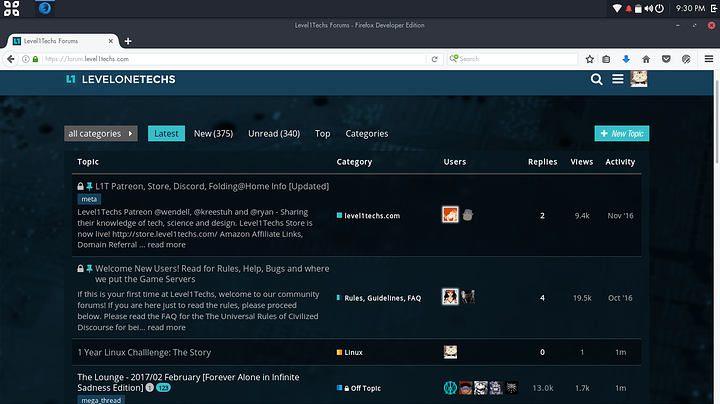First the Laptop
The Specs
- 11.6 Inch 1366x768 Screen
- I.O - 1 USB 3.0 Port / 2 USB 2.0 Ports / 1 SD card Slot / 1 HDMI Port / 1 Charging Port
- CPU: Intel i3 4030U CPU at 1.9Ghz with 4 threads
- 4GBs of RAM (Which are expandable)
- 500GB HDD 5400RPM Drive (Which I later Upgraded to a Samsung SSD)
- Broadcom Wi-Fi Card (Which I rightlfully set on fire, and also replaced for an Intel one)
- No Backlit Keys
- 360 Degree Hinge for Tablet Mode (which I don't use)
I've started this challenge with the intention of learning Linux and to experience a "Change of Scenery" on October 19th 2015. prior to settling with Manjaro (An Arch Linux based Distro) I originally went Distribution hopping. for people who may not understand the concept of distro hopping, you are basically jumping from Linux distro to Linux distro until you settle with one you like and enjoy. in my early experiences I've tried,
- Ubuntu (Which I hated)
- Fedora (which has legendary security support but I wasn't so fond of for some reason)
- OpenSUSE (I could not get to work for the life of me)
- Antergos (I didn't like the performance at the time)
- Manjaro (I eventually settled with this disto in the beginning prior to moving to Arch Linux ultimately)
I've always had a fondness for GNOME as my primary Desktop environment, I didn't want to try anything else, I was stubborn and I loved having everything in front me. for example GNOME's extension support which allowed to have the weather on my taskbar, App Menu support and excellent themeing support. I will admit this was the only distro and Fedora were the only distros that had Internet connectivity working out the box. I later learned that Broadcom which was the Bluetooth and Wi-Fi chipset within my laptop provided almost no support for Linux what so ever. it angered me beyond reasoning, I bought an Intel Wi-Fi card, opened up my laptop and removed it from and installed the Intel one. after a reboot internet worked perfectly.
As time went on I made it my mission to install Arch Linux since my love for Linux grew. Of Course Manjaro was based upon Arch Linux, but required you to manually configure everything via BASH (Or the Linux Command Line) around 4 or 5 months I still couldn't do it. I was busy balancing school and work, I didn't have time to learn how to navigate through Directory trees through BASH. but I learned little by little as time went on.
Around 7 months into the Challenge, I felt confident in installing Arch Linux. so I made a Arch Linux boot drive via Rufus on Windows and went to town. and followed the Arch Wiki. No internet connectivity whatsoever. I was confused. I couldn't understand why. and it donned upon me that I didn't know there was a built in utility from the Linux command line called Wi-Fi menu which allowed you to connect to WPA2 based networks which mine of course is. After around 3 days or so, after figuring out how stuff worked. I was successful. I installed Arch Linux, and configured everything to my liking.
After the first year. I decided to learn other things. some which were necessary and useful
* Manually configuring a Kernel
* Adding Some Security To My System
* Learning pacman (The Arch Linux Package Manager)
* Diagnosing issues
* Learning Systemd (The default initialization system of Linux)
* Learned to try other Desktop environments. (Which turns out I hated all of them except GNOME and Budgie Desktop)
I learned all in a few months. and to this day I've moved away from Windows on the mobile space. I still use Windows on my Desktop. but All my mobile devices run Linux for the better. I've become so confident with Linux that I even made quick tutorial on how to install Arch Linux. and I became so proficient that I learned how to install Arch Linux in about 7 or 8 minutes. which was an achievment for me considering about a year and a half ago, if you asked me to do that, I would of been confused.
If you ever felt like you wanted to try out something new or move away from Windows. I totallly recommend Linux it's something that made me realize in the software world there are alternatives and they are great.
I've moved away from GNOME into Budgie Desktop
The Forum on Linux
@Eden
My Tutorial on installing Arch Linux. and little things not mentioned in the Wiki on the Installation guide.


